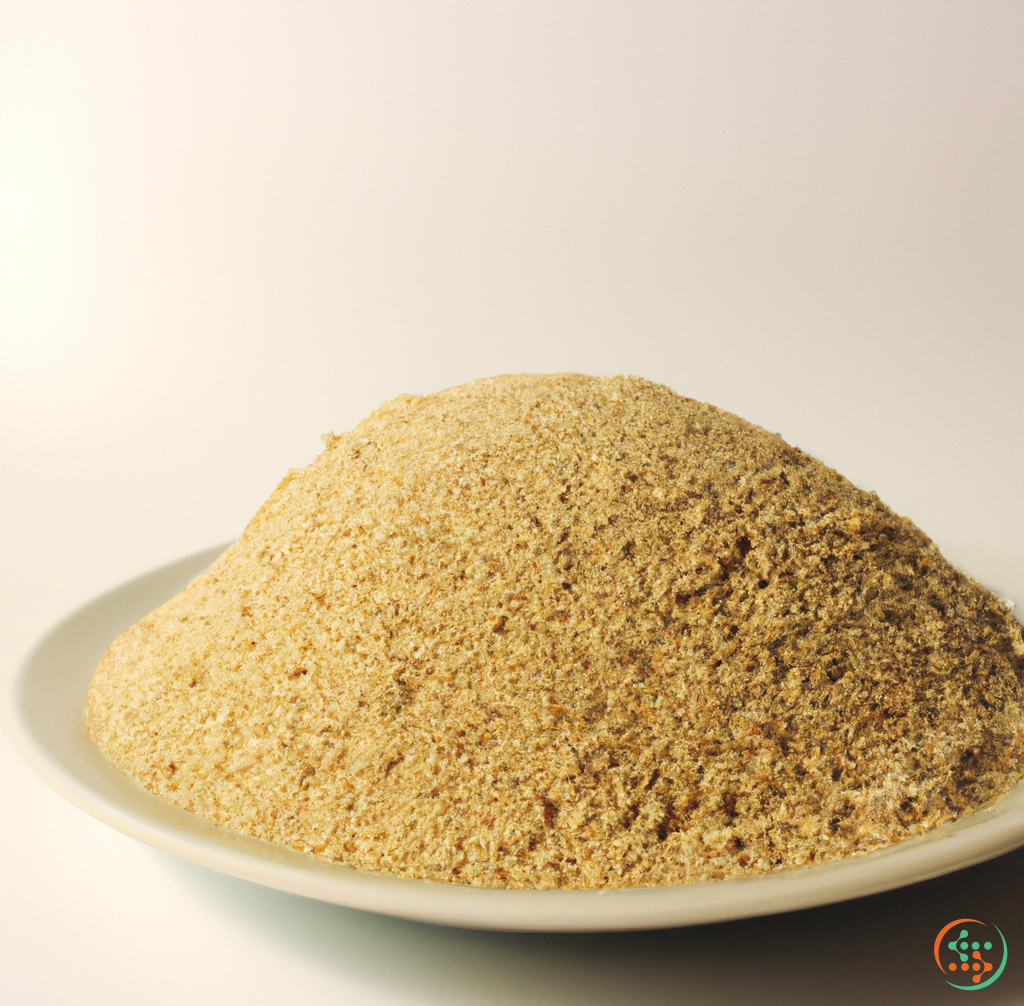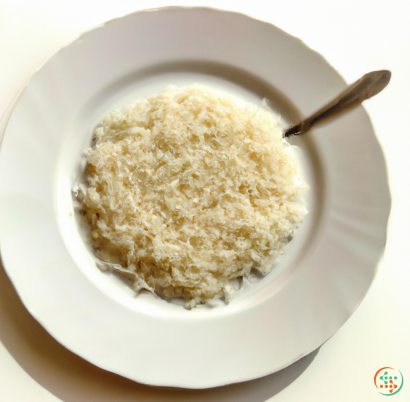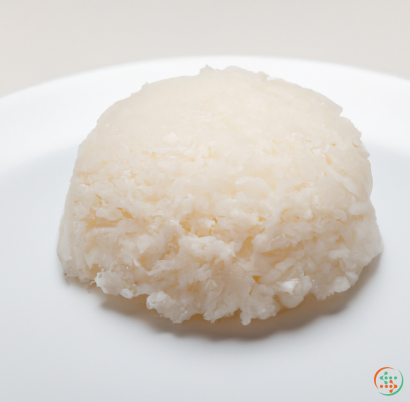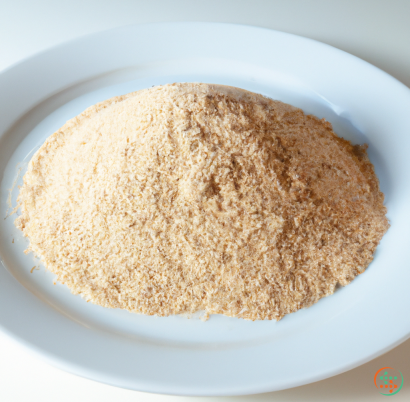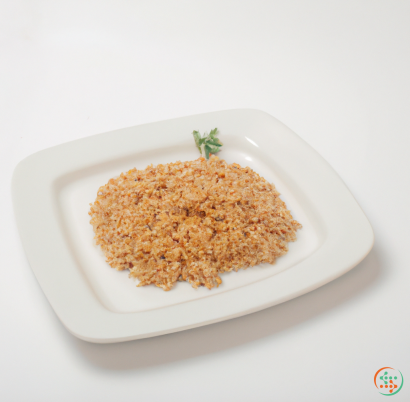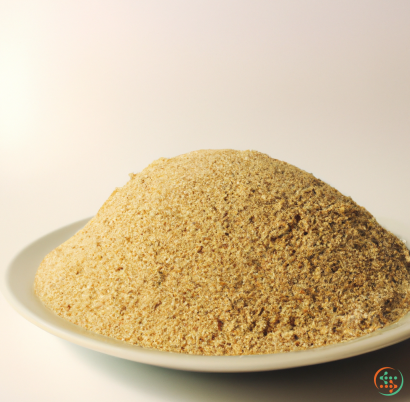Sorghum Flour
Sorghum flour, sometimes called sweet flour or Milo, is a widely used type of flour, largely in Africa, Asia and other parts of the world. It is made from the starchy seed of a grassy plant and is a staple part of many diets.
What is Sorghum?
Sorghum is a cereal grain that belongs to the grass family and is grown in arid regions of the world. It is also known by various other names including milo, sweet flour, great millet, broom corn, and jowar. It is the most widely grown crop in Africa and is the fifth-most-important cereal crop in the world.
Sorghum is sensitive to environmental conditions such as drought, temperature, and soil fertility. This makes it a dependable crop in parts of the world where climate change has caused volatile and unpredictable weather patterns. In some places, it has become a significant crop for biofuel production due its drought resistance. With many farmers using sustainable practices, sorghum has become an important crop not just from a food security perspective but from a global environmental health stance too.
What is Sorghum Flour?
Sorghum flour is made from grinding the dried starchy seeds of the sorghum plant. It is gluten-free and high in carbohydrate.
The milling process to produce the flour may involve a few different steps. Immediately after harvest, the grain is dried with heat, then it is allowed to cool and stored in bins. The cooled grain is then cracked, de-hulled, and passed through screens which sift out the grains making them ready to mill.
Flour is usually considered white, although sorghum flour is darker in color than white flour, as it retains some of its bran, which is where much of the nutrients reside. It is available in light, medium and “whole” varieties. The distinction between light and medium blends is the amount of the bran retained - with the light flour having more bran removed. Whole sorghum flour is essentially pureed seeds and has the lightest color.
The consistency of sorghum flour can vary and generally speaking it has a fairly coarse texture. Its mild, earthy flavor is slightly sweet and nutty, similar to that of wheat flour.
Nutritional Benefits of Sorghum Flour
Sorghum flour is packed with nutrients, providing vitamins and minerals such as magnesium, iron, zinc, and phosphorus. It is a good source of dietary fiber and provides good amounts of protein, fat, carbohydrates, and potassium.
Sorghum flour is proven to be a beneficial component of any diet. It is especially good for managing blood sugar, fighting inflammation, and helping digestion. It contains zeaxanthin and lutein, two powerful antioxidants that protect your cells from oxidative damage.
Moreover, its high nutritional value makes it a great choice for people with gluten intolerances or Celiac disease since it is naturally gluten-free.
Cooking with Sorghum Flour
Sorghum flour is an excellent replacement for all-purpose flour, particularly if you’re cooking with ingredients renowned for their gluten-free characteristics such as buckwheat and amaranth. It should be added to a recipe as a partial replacement depending on the type of bread or cakes you are baking.
When cooking with sorghum flour it loves moisture, so recipe adjustment is often necessary and it may require more liquid or oil when compared to recipes that call for wheat flour. Additionally, sorghum flour may require additional leavening in some recipes, such as an extra teaspoon of baking powder or baking soda.
Sorghum flour also works well in porridge, pancakes, and even vegan cheese sauces. Additionally, sorghum can also be cooked like any other grain.
In conclusion, sorghum flour is a nutrient-rich, gluten-free flour that can be used to make delicious baked goods, porridge, pancakes, and more. It lends a nutty, sweet taste to recipes and is easy to work with, requiring little adjustments. Its benefits for health and nutrition make it worth considering for home and commercial bakers alike.
Welcome to a curious journey across the globe, from sorghum fields in east Africa to the dinner plates of homes around the world. It’s a journey that involves a highly efficient, interlocked system of production, processing, and distribution. Somewhere in this sequence is the story of the transformation of sorghum into flour.
In our explorations of the journey of sorghum on its way to the dinner plate, we’ll look at the growth, harvesting, and processing of the grain. We’ll then delve further into the science of milling it into flour and the technological advances that can make this process so efficient and effective.
Let’s begin our voyage by looking at the story of sorghum from its origination as a wild grass in Africa’s savannas and deserts, to domestication for use as a nutritious and reliable food source, and finally to its global presence as one of the world’s most important cereals.
The History of Sorghum
Sorghum (Sorghum bicolor) is said to have originated in East Africa, where it’s now widely grown in more than 120 countries across the globe. Highly drought-resistant, and capable of surviving on marginal land, it was quickly developed as a vital and versatile food source.
It was grown as a staple cereal crop in the Nile River Valley over 5000 years ago, and still provides food sources, and income, to millions in developing countries. According to the International Crops Research Institute for the Semi-Arid Tropics, sorghum is estimated to provide staple food for more than 500 million people.
Even earlier, in ancient times, cultures used to use species of sorghums for religious rituals and for brewing beer.
There are three categories of sorghum, including grain sorghums, forage sorghums, and sweet sorghums. Grain sorghums are the most common type grown for food production, as they are cultivated primarily for grain used to make flour. Sweet sorghums are grown for syrup, and forage sorghums (used for animal feed) are most commonly grown for their leaves, stalks, and stems.
Sorghums are generally classified into two types: African or grain sorghums and Asian/Indian or broomcorn sorghums. African sorghums tend to be higher in grain quality, while Asian sorghums are more suitable for animal feed due to their high fiber content.
Harvesting and Processing
Once the sorghum grains reach maturity, they are ready to be harvested. This is usually done either mechanically, by combining, or by hand in the more traditional methods.
In terms of the grain quality, harvest timing is important. To make a good-quality flour, the grain ideally needs to be harvested when it’s no more than 15 percent moisture.
Once harvested, the grain is typically dried for several days until it reaches the desired moisture content. The grain must be further cleaned of any dirt and debris, then sorted and graded according to quality.
The grains are then ready for the milling process, which is the conversion of the hulled grain into flour. This can be done in two ways, either by stone grinding, which is the more traditional method, or by steel rollers, which is now more commonly used.
Milling Sorghum into Flour
Milling sorghum into flour is slightly different to other grains, as sorghum has a particularly hard outer layer. To break this outer layer and access the softer starch granules inside, sorghum flour is milled in two stages.
The first stage is referred to as the “break-roll” process. During this stage, the grains are run through steel rollers set at a narrow gap to crack open the husk of the kernel and gather as much of the starch as possible.
The cracked grains then enter the second stage, referred to as the “reduction” process. Coarse steel rollers are used here to reduce the particles to a finer consistency, according to the desired end product.
The milled flour is usually stored in airtight containers before being shipped to its destination markets. The milled sorghum flour is extensively used in various baked products, both in Africa and in other parts of the world.
Today, there are numerous technological advancements that make the milling process even more efficient and cost-effective. These include improved husk-breaking techniques, high-speed steel rollers, and a general improvement in the milling of sorghum into flour.
Overall, the process of milling sorghum, from harvest to marketing, has become increasingly efficient and successful in recent years, allowing for high-end, high-quality flours to be available for all types of culinary adventures.
Conclusion
Sorghum is a unique grain that has a fascinating story of cultivation, harvest, and processing. It’s a journey that starts in the fields of Africa and ends on dinner plates across the world, transformed into a versatile, nutritious flour.
Whether you’re enjoying baked items, porridge, or flatbreads, it’s a journey you can experience with every bite.
Today, the journey of sorghum is made possible by the ongoing efforts to improve the efficiency of the journey both in terms of mechanical and scientific advancements, as well as collaborative efforts within the industry.
And so, with the hard work of growers, millers, marketers, and distributors, the origins of sorghum and the production of its flour is an ever-evolving story with a sample of global cuisines that’s sure to delight.
| Vitamin C | 0.6 mg | |
| Vitamin B1 | 0.09 mg | |
| Vitamin B2 | 0.01 mg | |
| Vitamin B3 | 0.00133 grams | |
| Vitamin B5 | 0.18 mg | |
| Vitamin B6 | 0.07 mg |
| Calcium | 0.006 grams |
Daily Value 1.3 g
|
| Iron | 0.97 mg |
Daily Value 0.018 g
|
| Magnesium | 0.031 grams |
Daily Value 0.4 g
|
| Phosphorus | 0.087 grams |
Daily Value 1.25 g
|
| Potassium | 0.145 grams |
Daily Value 4.7 g
|
| Sodium | 0.001 grams |
Daily Value 2.3 g
|
| Zinc | 0.47 mg |
Daily Value 0.011 g
|
| Copper | 0.01 mg |
Daily Value 0.9 mg
|
| Manganese | 0.43 mg |
Daily Value 0.0023 g
|
| Glucose | 0.34 grams |
|
| Total Sugars | 0.131141 grams |
per 100g
|
| Palmitic acid (16:0) | 0.27 grams |
|
| Stearic acid (18:0) | 0.03 grams |
|
| Total Saturated fatty acids: | 0.3 g | |
| Oleic acid (18:1) | 0.38 grams |
|
| Palmitoleic acid (16:1) | 0.01 grams |
|
| Total Monounsaturated fatty acids: | 0.39 g | |
| Linoleic acid (18:2) | 0.48 grams |
|
| Total Polyunsaturated fatty acids: | 0.48 g | |
